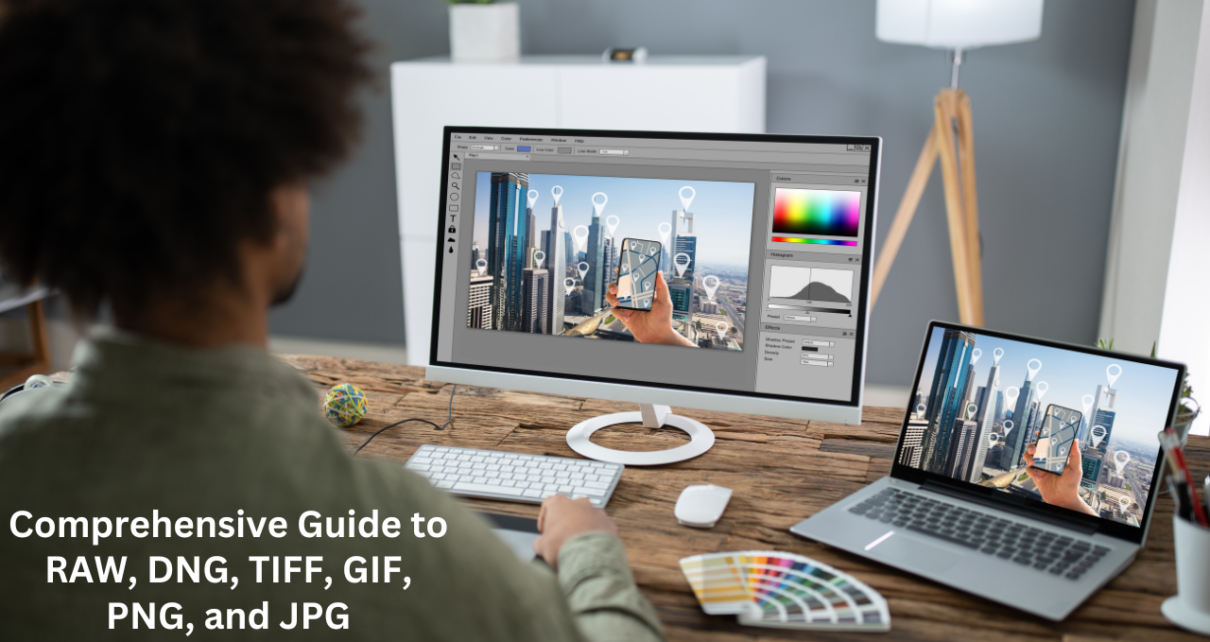In the world of digital photography, image file formats play a crucial role in preserving and sharing the captured images. Each format has its unique characteristics, suited for specific applications and purposes. Understanding the major differences between these formats is essential for photographers, graphic designers, and anyone who works with digital images.
RAW vs. Lossless vs. Lossy Formats: The Fundamental Distinction
The primary distinction between image file formats lies in their compression methods, which can be broadly categorized into RAW, lossless, and lossy formats.
RAW: RAW image files, often referred to as “digital negatives,” capture the unprocessed, uncompressed data directly from the camera’s sensor. This means RAW files contain the maximum amount of information, allowing for greater flexibility in editing and post-processing. However, RAW files are typically larger in size and require specialized software for viewing and editing.
Lossless: Lossless compression formats, such as TIFF and PNG, preserve all the original image data, maintaining the image quality without any loss in detail. They are ideal for archiving, print-ready images, and applications where preserving every pixel is crucial.
Lossy: Lossy compression formats, such as JPEG and GIF, achieve smaller file sizes by selectively discarding some of the image data. This results in a reduction in image quality, but the trade-off is often acceptable for web images, social media sharing, and applications where file size is a priority.
Navigating the Image File Format Landscape
Let’s delve into the specific characteristics of each common image file format:
RAW:
- Unprocessed, uncompressed data from the camera sensor
- Maximum flexibility for editing and post-processing
- Larger file sizes
- Requires specialized software for viewing and editing
DNG:
- Digital Negative format, an open-source RAW format
- Widely supported by camera manufacturers and editing software
- Smaller file sizes compared to uncompressed RAW formats
TIFF:
- Lossless compression format, ideal for archiving and print-ready images
- Supports a wide range of color depths and layers
- Larger file sizes compared to lossy formats
GIF:
- Lossy compression format, limited to 256 colors
- Suitable for animated images and web graphics
- Small file sizes
PNG:
- Lossless compression format, supports millions of colors
- Ideal for web graphics, logos, and images with text
- Smaller file sizes compared to TIFF
JPG:
- Lossy compression format, widely used for web images and digital photography
- Offers a balance between file size and image quality
- Supports various compression levels
Choosing the Right Format for Your Needs
The choice of image file format depends on the specific application and purpose. Here’s a quick guide:
- RAW: For professional photographers who require maximum flexibility in editing and post-processing.
- DNG: For photographers who prefer an open-source RAW format with wide compatibility.
- TIFF: For archiving, print-ready images, and applications where preserving every pixel is crucial.
- GIF: For animated images and web graphics with limited color requirements.
- PNG: For web graphics, logos, images with text, and applications where lossless compression is essential.
- JPG: For general-purpose photography, web images, and applications where file size is a priority.
Conclusion: Embracing Versatility in Image File Formats
Understanding the nuances of different image file formats empowers you to make informed decisions when capturing, editing, and sharing your digital images. Explore the intricate world of image file formats with our comprehensive guide to RAW, DNG, TIFF, GIF, PNG, and JPG. Whether you’re a seasoned photographer or a casual image enthusiast, mastering the art of selecting the right format will ensure your images retain their beauty and integrity, preserving the essence of your creative vision.




